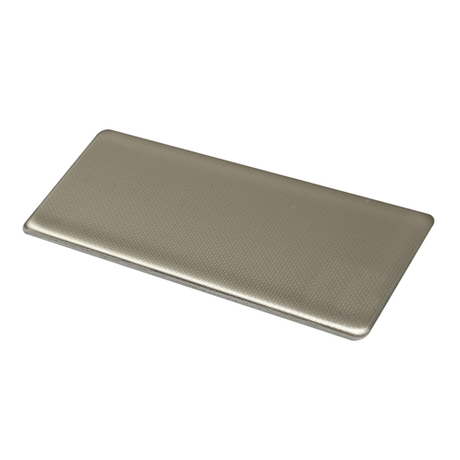Shaft And Hole Tolerances For Clearance & Interference Matches Misumi


In the construction industry, they supply structural help and cladding, enhancing each the durability and visible appeal of buildings. In the automotive sector, chrome steel plates are integral to exhaust methods and trims, offering excessive power and corrosion resistance. The meals processing industry depends on chrome steel plates for equipment and surfaces that require excellent corrosion resistance, formability, and hygienic properties.
Meals Processing
For occasion, Take 16 guage metal sheet is sort of 1.5 mm while 18 guage sheet will virtually be 1.2 mm. Engineering as properly as Material standards such as ASTM or ISO must be referred when making such measurements, as these specifications govern the practical usage and the industry practices. The alloy's properties, similar to luster and resistance to corrosion, are helpful in lots of applications. These examples underscore the crucial position of thickness tolerances in sustaining the performance and safety of stainless steel plates across totally different industries. To calculate and guarantee compliance with stainless-steel plate thickness tolerances, several exact measurement tools are generally used.
Contents
- Through the fabrication parts, the suitable thickness doesn’t simply conform all fabrication processes to the set standard but in addition embraces cheap cheapness.
- Properly, it's the allowable deviation from the specified thickness of the stainless-steel plate.
- Tolerances are essential for guaranteeing accuracy and are widely utilized in sheet metallic fabrication.
- Stainless steel usually needs tighter tolerances (±0.005′′) than aluminum (±0.010′′) due to its decrease malleability and better power.
- It is usually utilized in industrial purposes where surface look isn't critical.
- As a chrome steel producer with over 15 years of experience, I've seen how critical proper pipe tolerances are for ensuring optimal efficiency and reliability in demanding applications.
Tolerance refers to the permissible variation in a dimension or measurement, defining the vary within which a part’s actual dimensions can range from the desired dimensions. This variation is critical to accommodate the inherent imprecision in manufacturing processes and material properties, guaranteeing components match and function accurately. Stainless metal plates are out there in numerous grades, each with particular properties and purposes. https://www.samanthaspinelli.it/author/inground-structure/ are usually outlined by their chemical composition and mechanical properties. Fuel does more than simply blow away molten slag—it actively reacts with the fabric.
Cutting Processes & Tolerance
Equally, improper finishing processes can lead to variations in floor thickness. Every steel elements custom manufacturing and assembly firm has its personal gear and course of stage. Completely view technical documentation of ranges additionally affect the company’s capability to control the tolerance of the sheet steel components produced. When selecting chrome steel for tasks corresponding to piping, handrails, or ornamental installations, surface high quality isn’t nearly appearance—it instantly affects performance, hygiene, and durability.
Metal Requirements
All dimensions are in millimetres, (mm).The information given is not meant to switch that shown in individual requirements to which reference ought to at all times be made. Many manufacturers use specialized software program or spreadsheets to calculate and monitor thickness and flatness tolerances. These instruments enable for the systematic recording of measurements and provide a approach to analyze information for tendencies and deviations.
European And International Requirements
BA finish provides a extremely reflective floor, ideal for purposes requiring a elegant look, corresponding to kitchen appliances and automotive trim. The original definition of tolerance is the finest way of restrict definition, which can not describe a distribution well. Two parameters are required to explain a distribution, imply worth and normal deviation. If two dimensions are accumulated, the mean value is the same, and the standard deviation is completely different, then the cumulative distribution is completely different. The outcomes will be totally different if the distribution state of dimension fluctuation is different. Assembly is the stage the place all particular person components come together into the final product—and where the cumulative impact of all prior tolerances is judged.

Why Are Tolerances Essential In Sheet Steel Fabrication?
EN10029 applies to Quarto hot-rolled plates, sometimes thicker than 3mm, produced via reversing mills. This commonplace covers tolerances for thickness, width, length, flatness, and edge deviations, focusing on uniform flatness across the plate. Controlling the thickness tolerance of stainless steel plates for panels during production is a fancy but essential task. This is partly because of their applications, which frequently require exact dimensions for electrical conductivity and thermal properties. Aluminum plates, for instance, may have tolerances as tight as ±0.005 inches, especially for skinny gauges. This precision is important for functions in aerospace and electronics, where even minor deviations can impression efficiency. While tighter thickness tolerances generally improve production costs because of the want for exact manufacturing and quality management processes, additionally they supply advantages by method of materials efficiency. Correct tolerances reduce material waste and enhance yield by minimizing scrap and rework, balancing value with efficiency needs. Subsequently, deciding on the suitable tolerance for a given utility can optimize each economic and practical outcomes.
